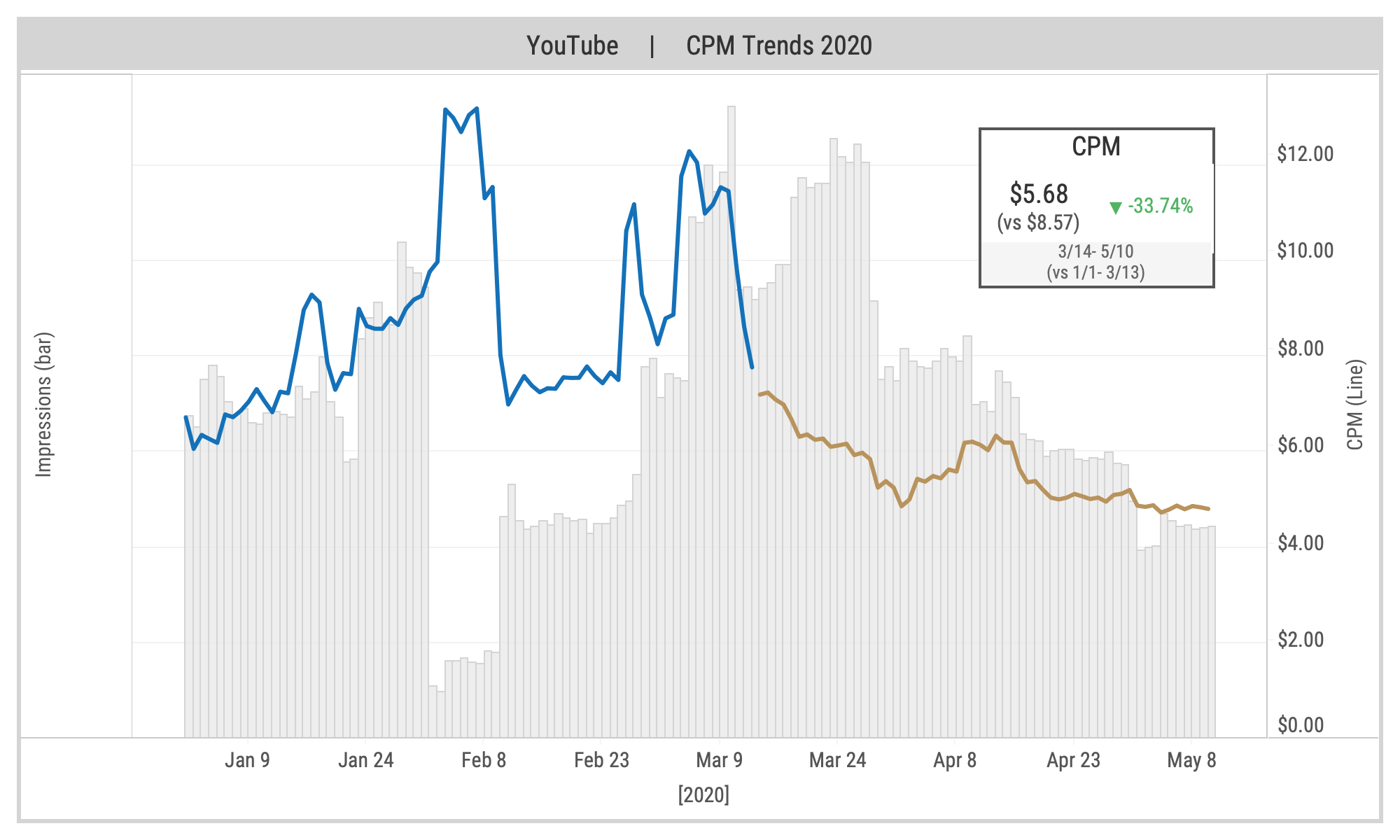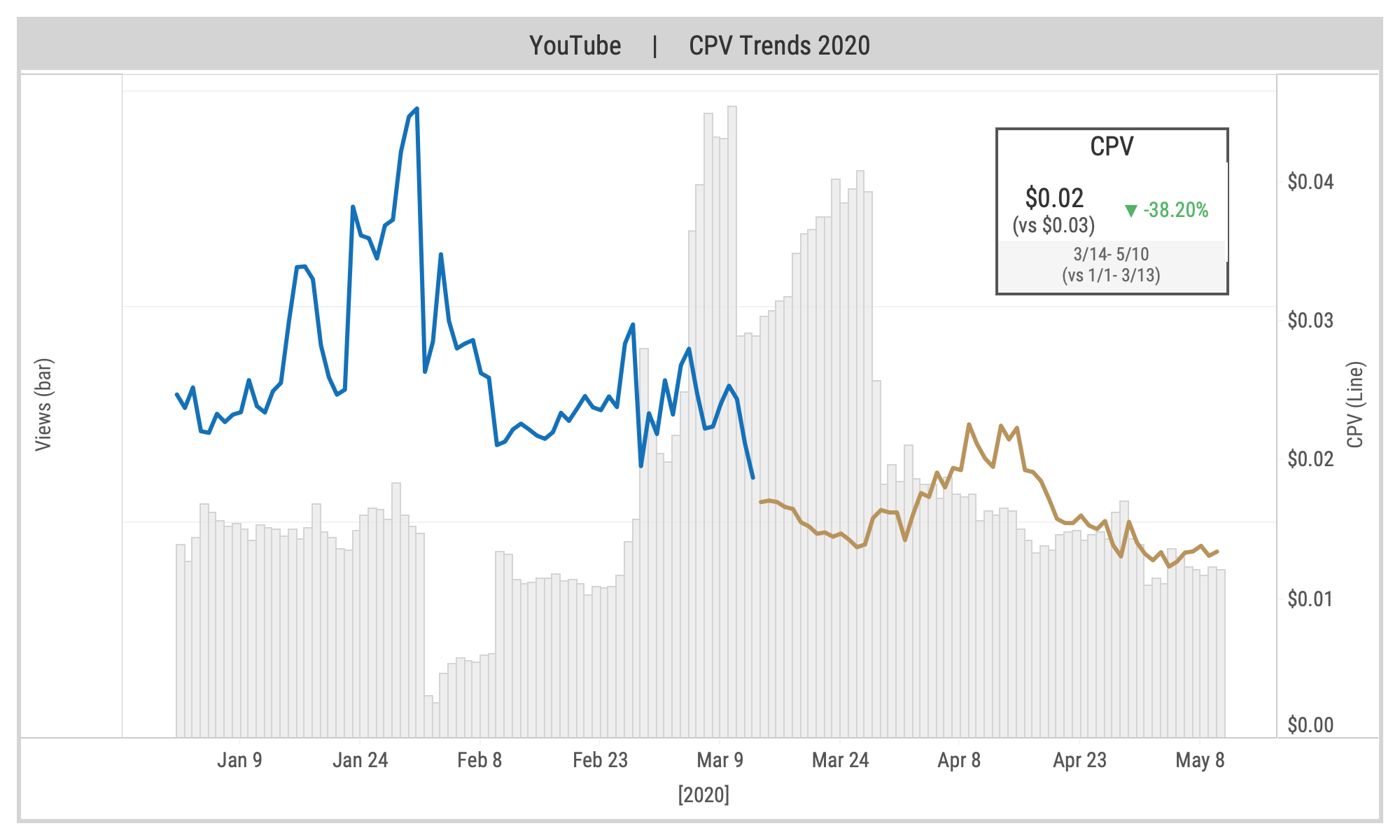COVID-19 YouTube Trends

Trends Through May 11, 2020
With over 73% of US adults on YouTube, the Google-owned video platform can be a valuable component to any brand’s marketing mix. But in the age of COVID-19, with overall internet usage soaring and advertisers pulling back their spends, the platform can give you even more ROI.
YouTube typically yields CPMs (cost per 1,000 impressions) in the $8–12 range, with the highest rates occurring during Q3 and Q4 and aligning with traditional holiday pushes. In mid-March, we saw a dramatic decline in YouTube CPMs, as well as other key metrics, as advertisers cut their budgets due to the impacts of COVID-19 and the marketplace became less competitive. CPMs dropped 36% to a new average low of $5.44. However, the first 11 days of May are showing the opposite trend, likely due to consumer behavior shifting as the country’s stay-at-home orders and commerce regulations change.
This trend was mirrored in video view metrics. Typically, YouTube’s average CPV (cost per 30-second view) ranges from $.03–$.04. In mid-March, this dropped 42% to an average low of just $.02.
What Marketers Can Do
This means that marketers still reaching a highly captive audience on YouTube (overall video consumption has increased) but at a significantly reduced cost (fewer advertisers on the platform results in to more competitive rates).
Consider a mix of ad formats and video lengths to develop nuanced messaging funnels, save additional dollars, and create more impact. Aside from traditional in-stream YouTube ads (users can skip at the 5-second mark, but advertisers only pay if the user watches for 30 seconds), consider newer YouTube ad offerings like 15-second non-skippable pre-roll (billed on a CPM basis) or six-second “Bumper” ads (billed on a CPM basis). These ad formats require more specific video lengths and therefore are utilized by fewer brands (fewer brands = better rates).
Layering these ad formats together allows for brand storytelling in sequence, creating greater impact. Traditional in-stream ads can offer a sweeping brand perspective, whereas 15-second non-skippable and 6-second Bumper ads can add frequency and focus on specific products. Retargeting in-stream viewers with 15-second non-skippable ads and Bumpers allows you to create a messaging “funnel.”
We do expect YouTube costs to normalize in the next several months and ramp in Q3 and Q4. If creative is on-hand now, it is certainly worth considering investing on YouTube.



